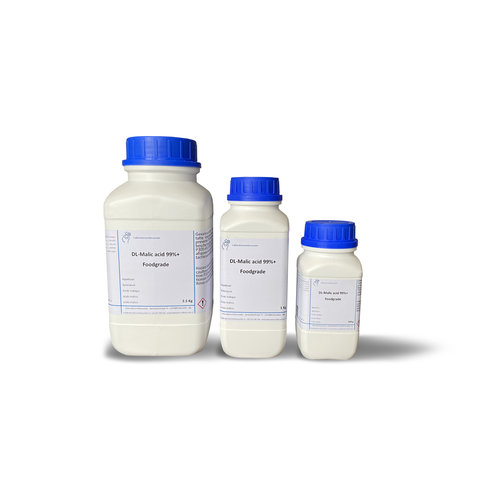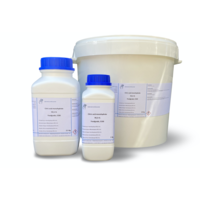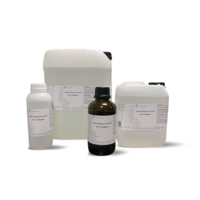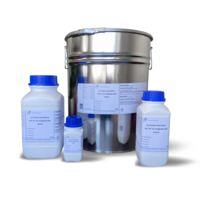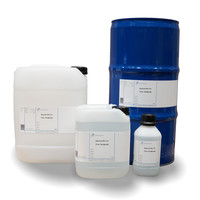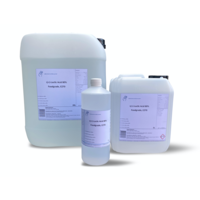You have no items in your shopping cart
DL-Malic Acid 99+%, food grade, E296
- Buy 2 and save 5%
- Buy 6 and save 10%
What is malic acid?
Malic acid (2-hydroxysuccinic acid) is a chemical compound from the groups of dicarboxylic acids and hydroxycarboxylic acids, which occurs as dextrorotatory D- and levorotatory L-malic acid. The L form is an intermediate in the citric acid cycle. In nature, L-malic acid mainly occurs in unripe fruits such as apples, quinces, grapes, barberry berries, rowan berries and gooseberries. The esters and salts of malic acid are called malates (from the Latin malum = apple, not to be confused with maleates, the esters and salts of maleic acid).
What is malic acid used for?
L-malic acid was first isolated from apple juice and described by Carl Wilhelm Scheele in 1785. In 1787, Antoine Lavoisier suggested the name acid malique, derived from the Latin word for apple (mālum). Paul Walden was able to prove the chirality and reversal of configuration at the carbon atom by the synthesis of L-malic acid and D-malic acid.
As a food additive, both the L-form and the D-form or the racemate can be used (E 296). In humans, D-malic acid can be converted to L-malic acid by enzymes. In practice, its use is rather limited due to the relatively high price. Instead, cheaper alternatives such as citric acid (E 330), tartaric acid (E 334) or phosphoric acid (E 338) are usually used. Sodium malate (E 350), potassium malate (E 351) and calcium malate (E 352) are used as additives in crisps.
Buy malic acid?
Malic acid of the best quality can be found at Laboratoriumdiscounter. This malic acid is not only food grade, but it is also friendly priced! Delivered quickly and available in different packaging. With volume discounts!
-Technical information
Empirical formula C4H6O5
Molar mass (M) 134.09 g/mol
Density 1.60
Flash point (flp) 200 °C • Melting point (mp) approx. 130 °C
Solubility: approx. 550 g/l (H2O, 20 °C)
WCS 1
CAS No.[6915-15-7]
EC-No. 230-022-8
Downloads
$$$$$
Hazard Statements
H319 Causes serious eye irritation.
Safety Recommendations
Precautions - Prevention
P280 Wear protective gloves/eye protection.
Precautions - Response
P305+P351+P338 IF IN EYES: Rinse cautiously with water for
amount of minutes; remove contact lenses, if possible; keep rinsing.

